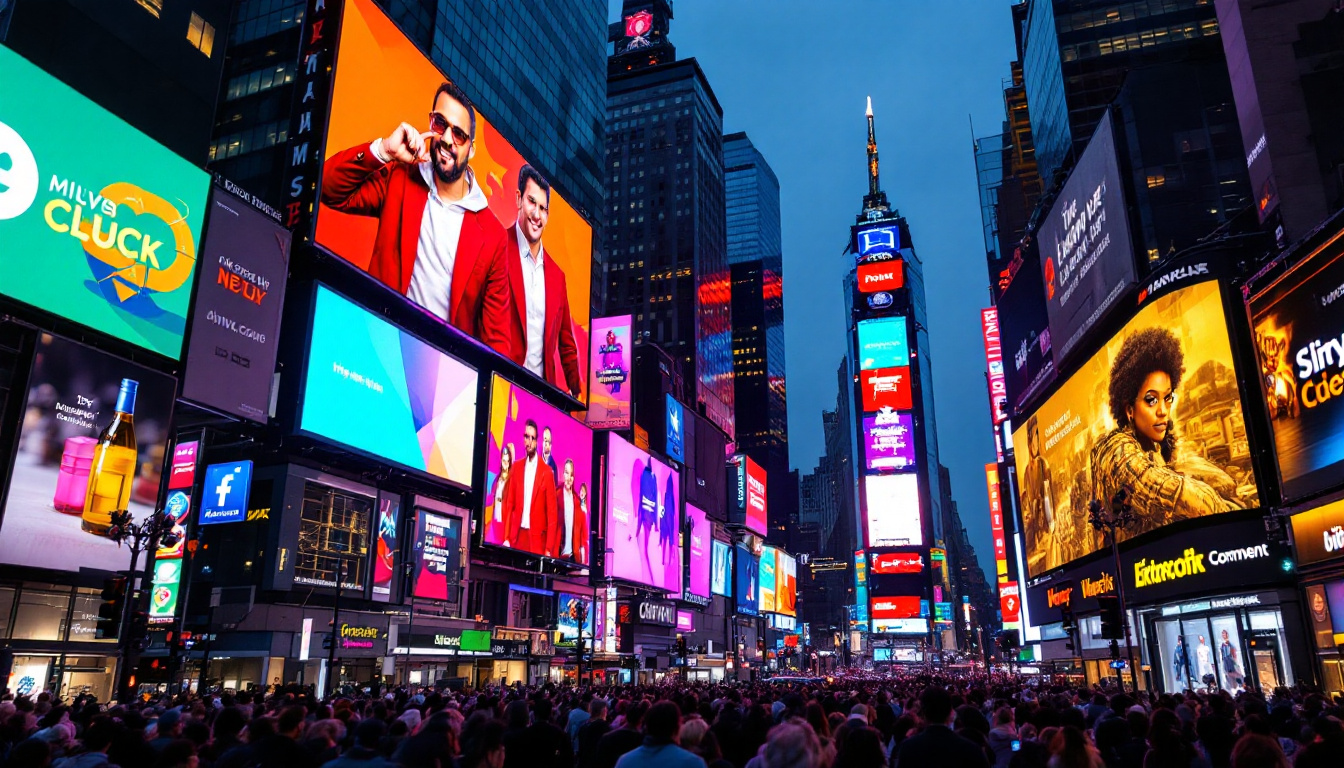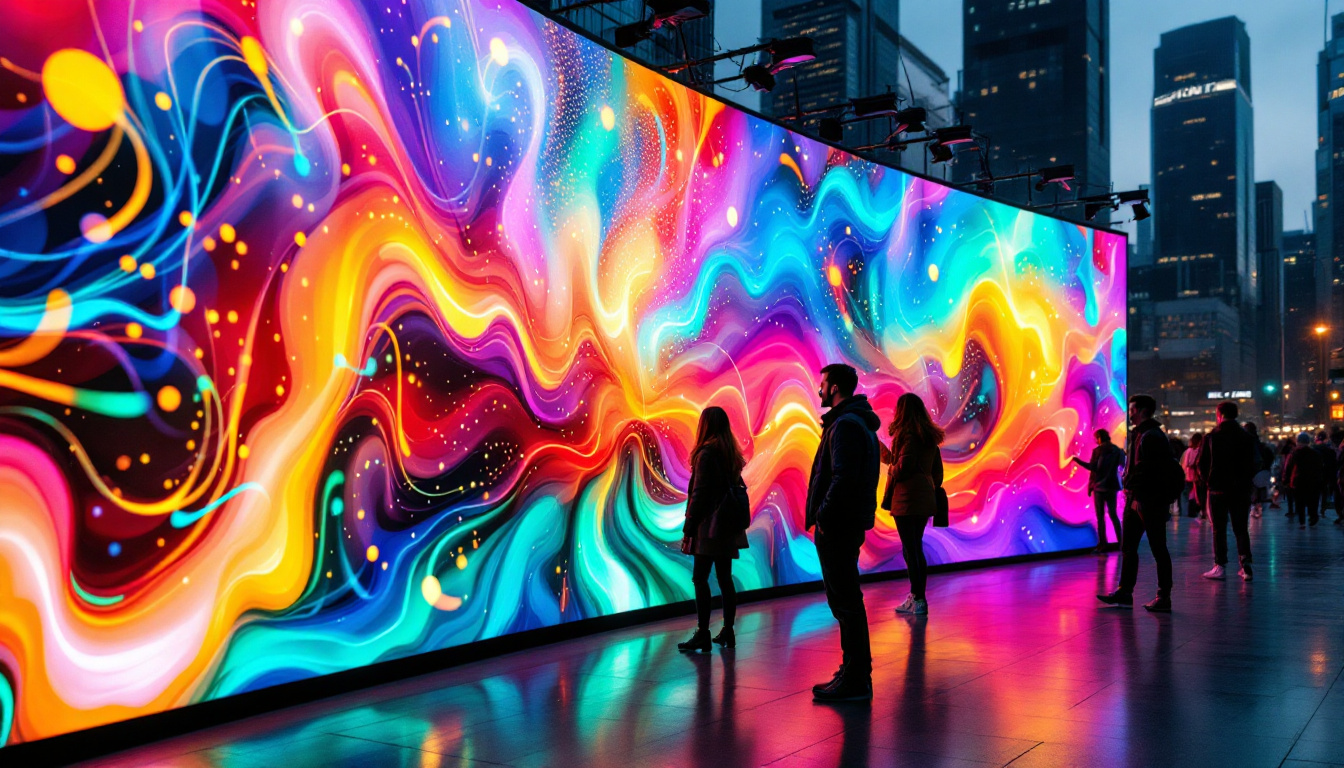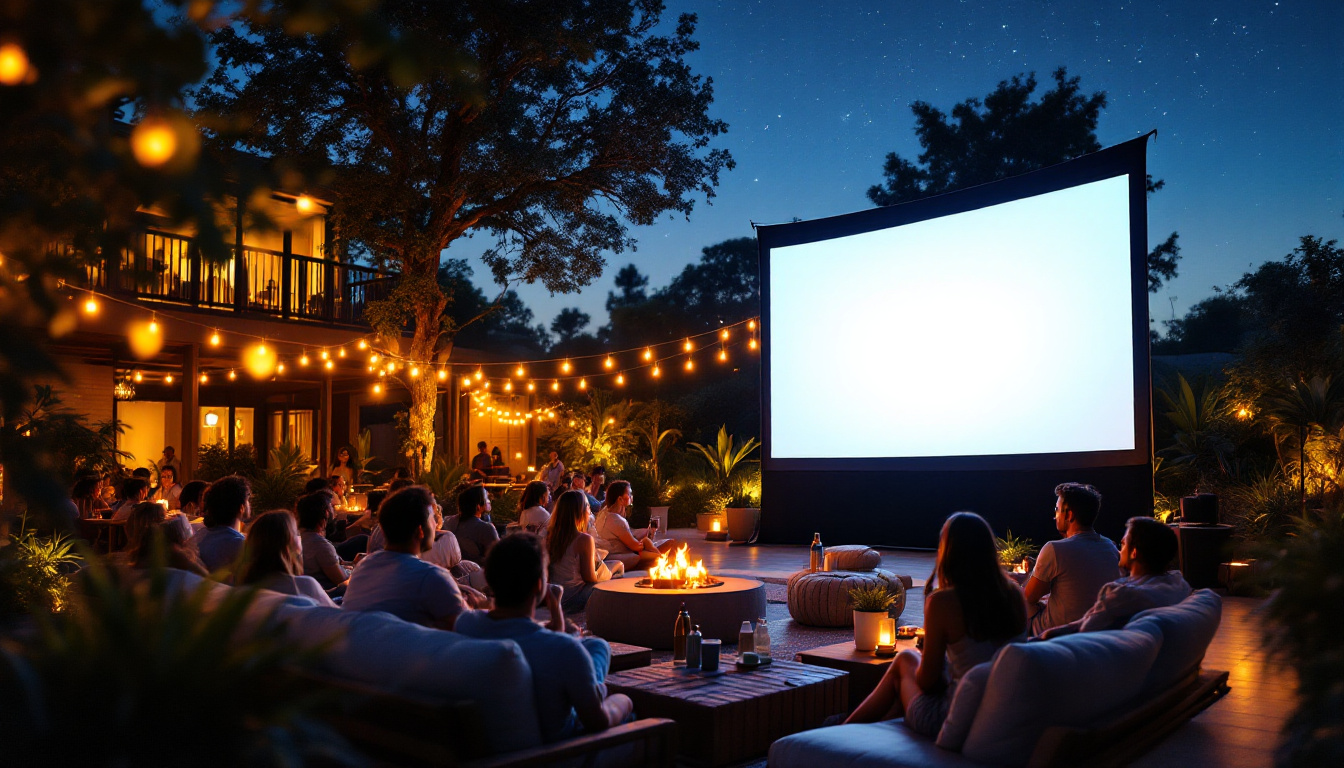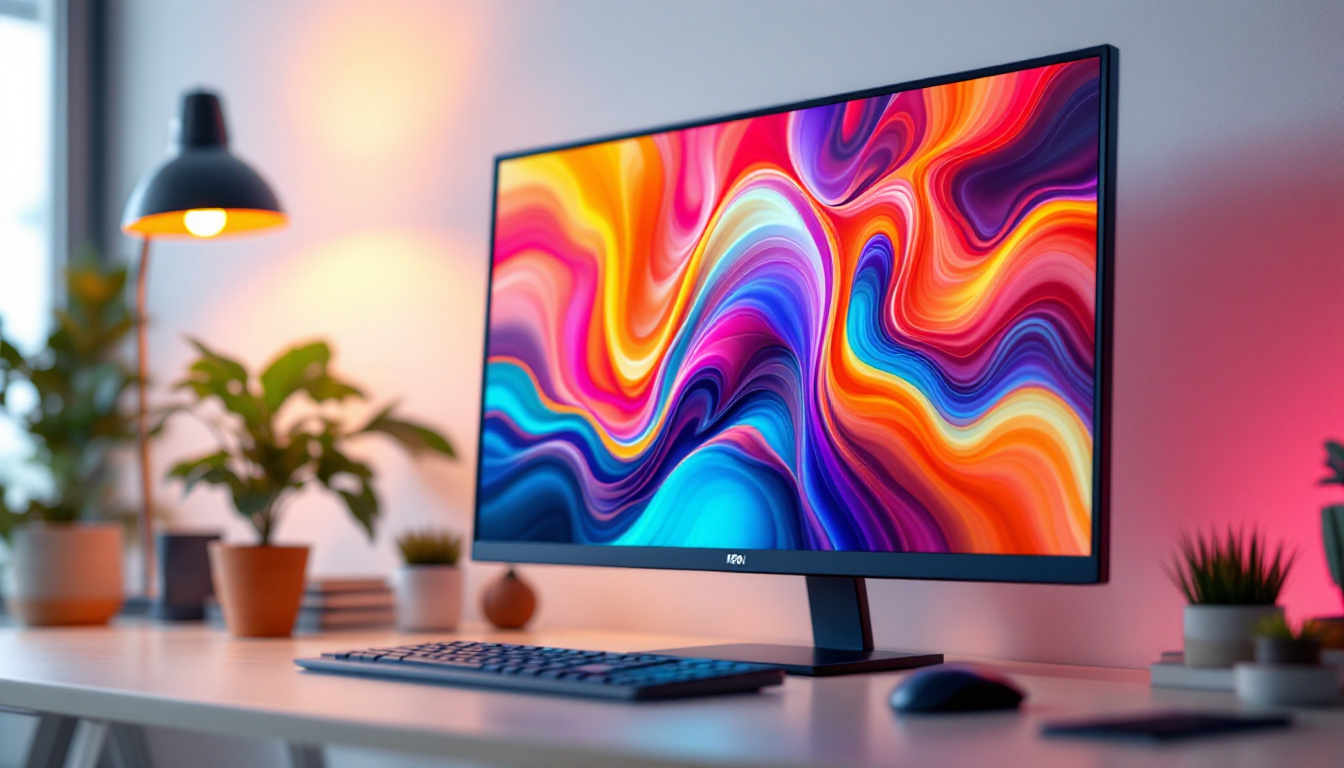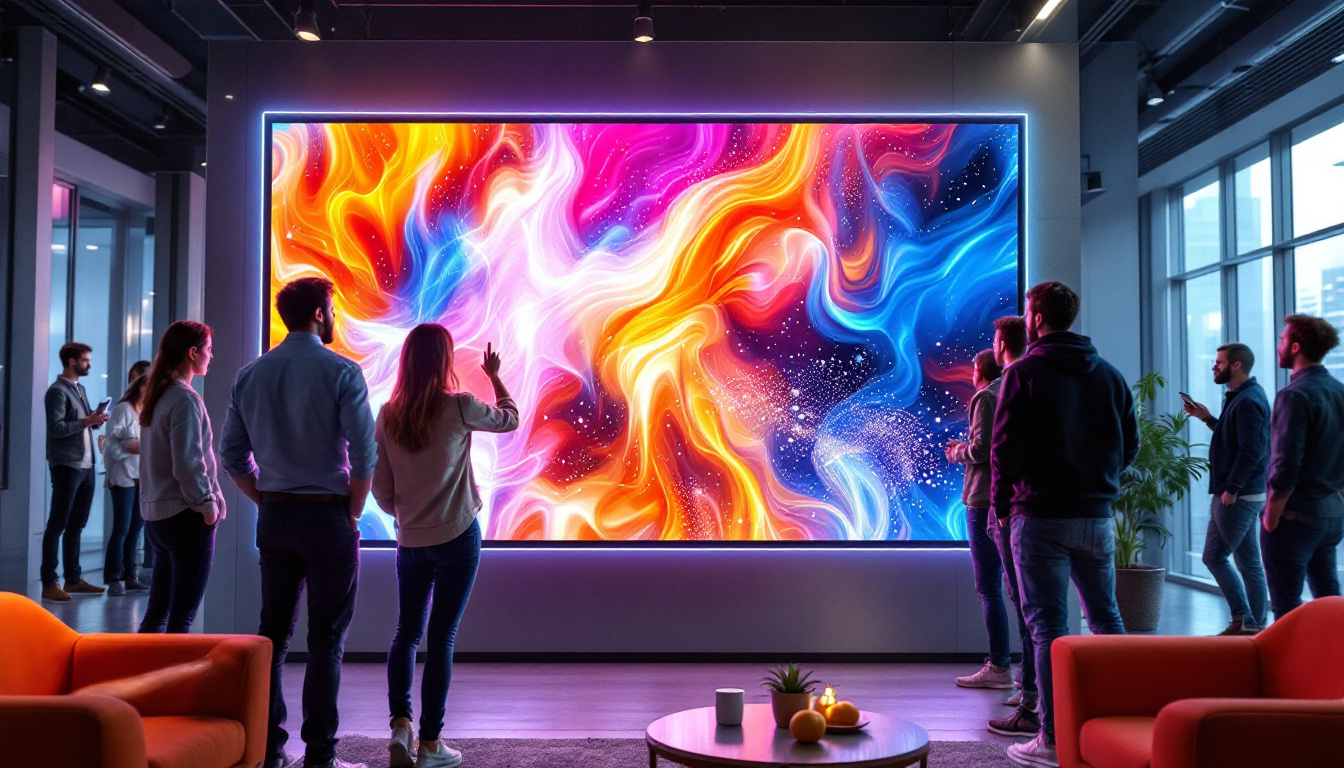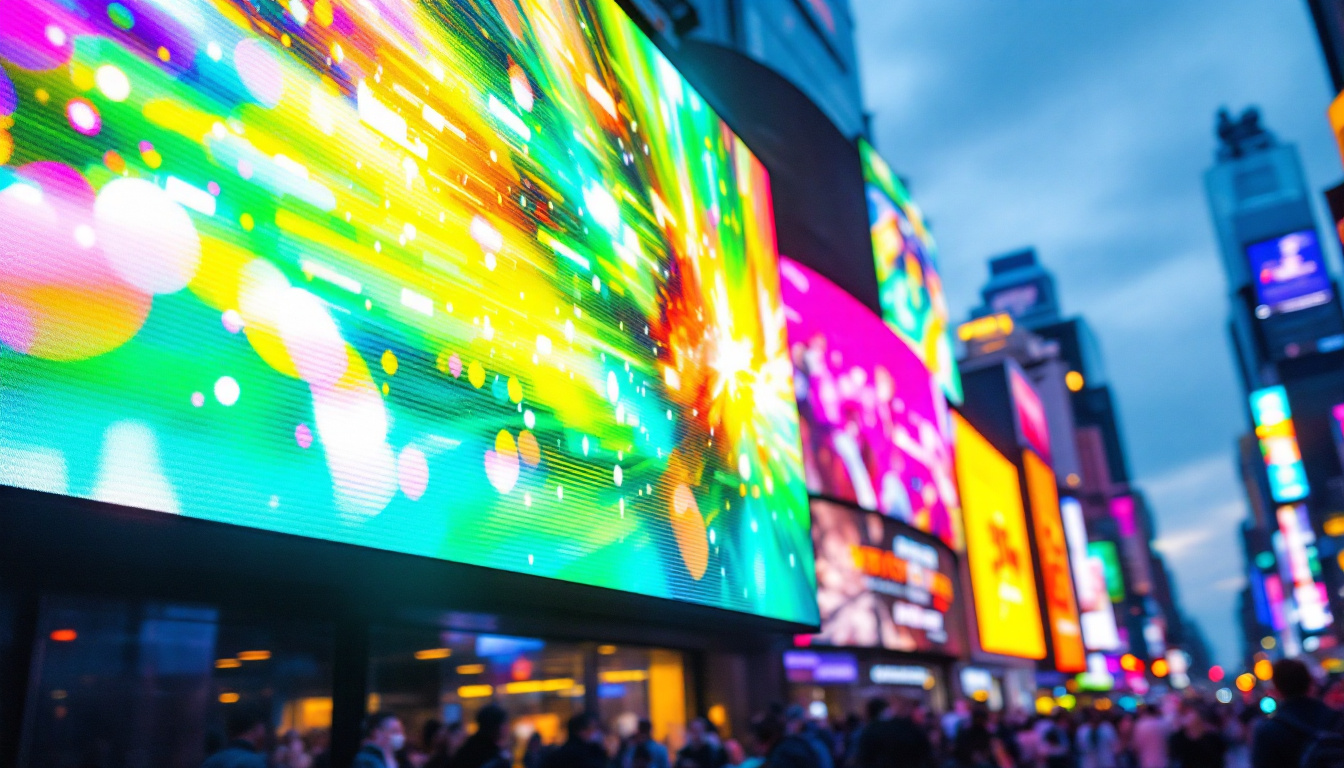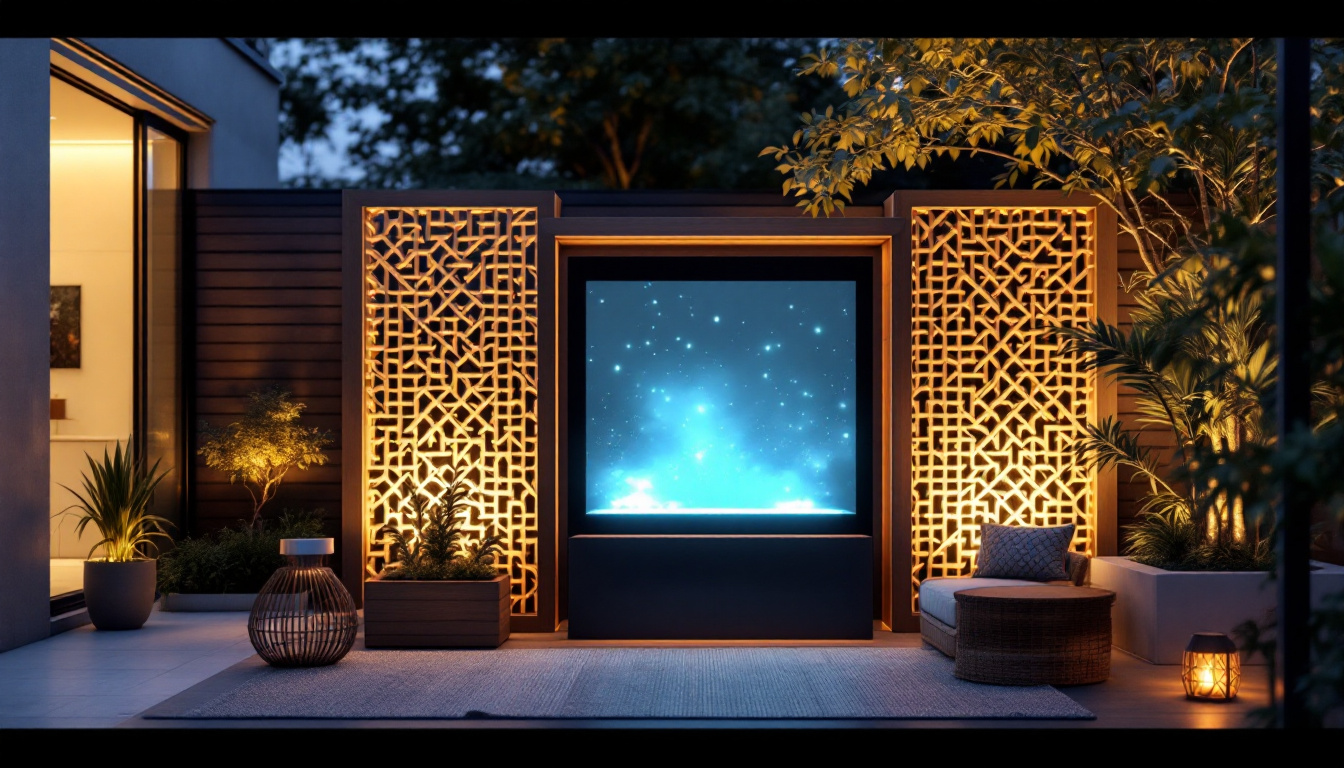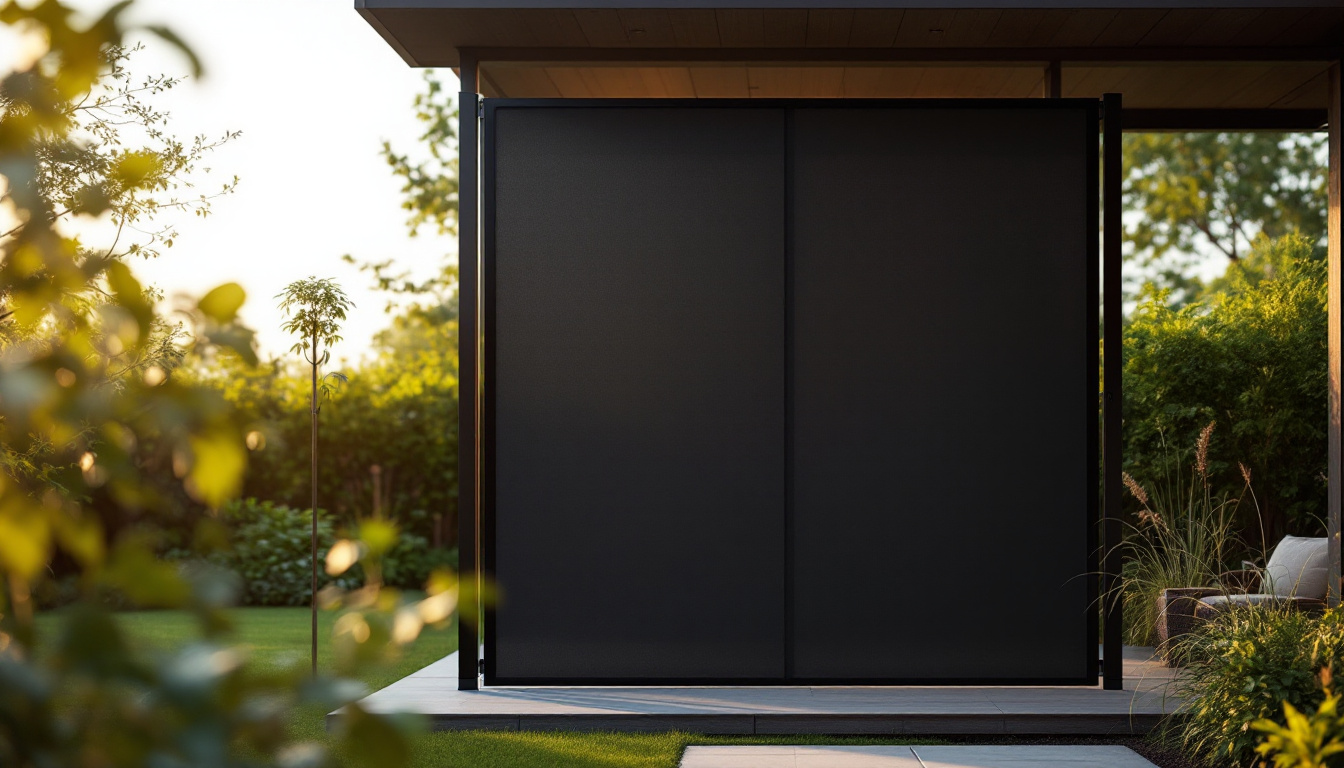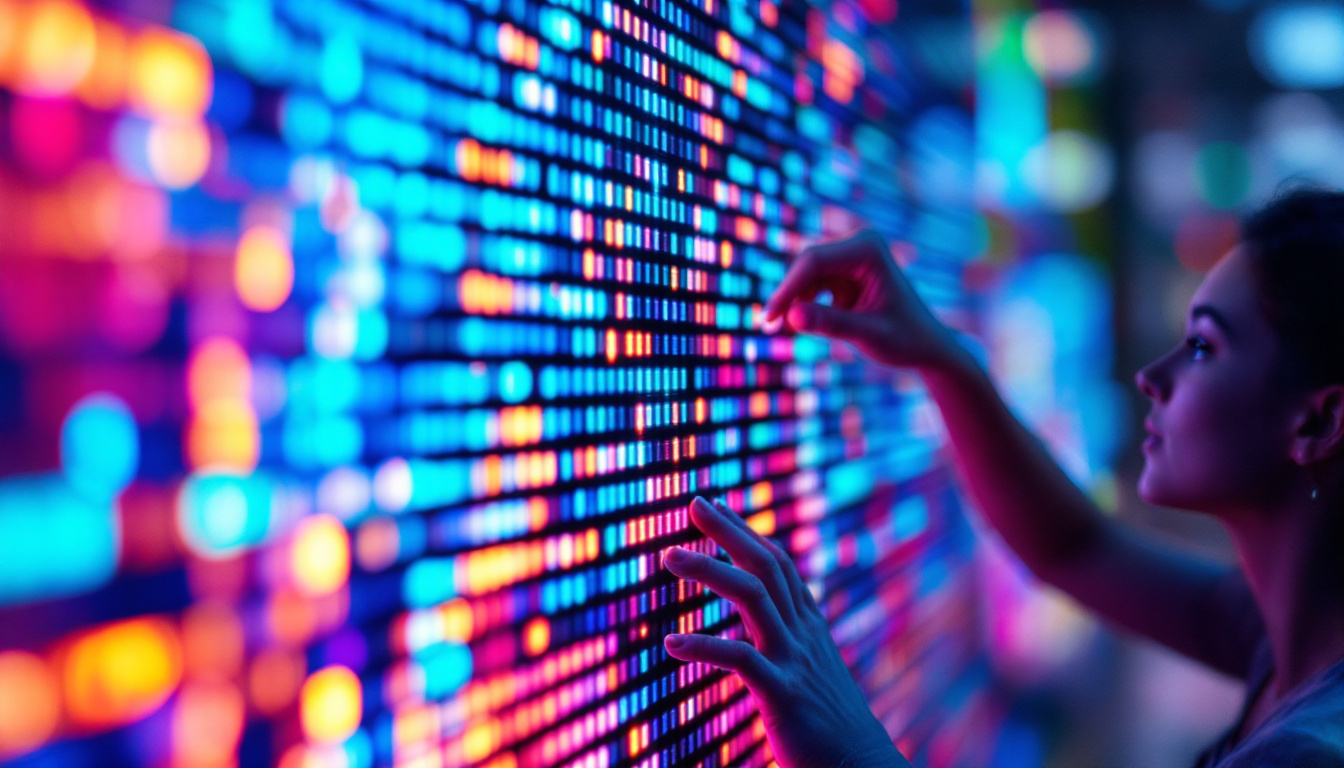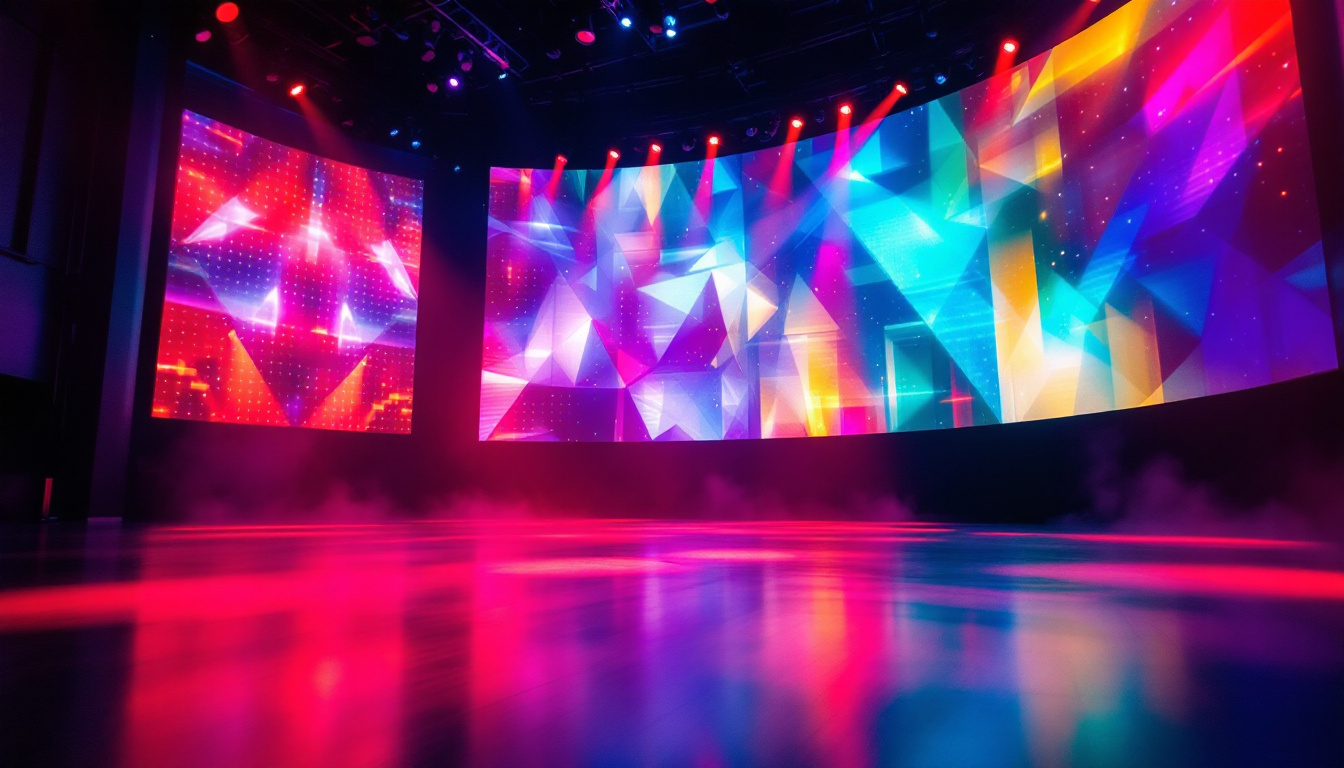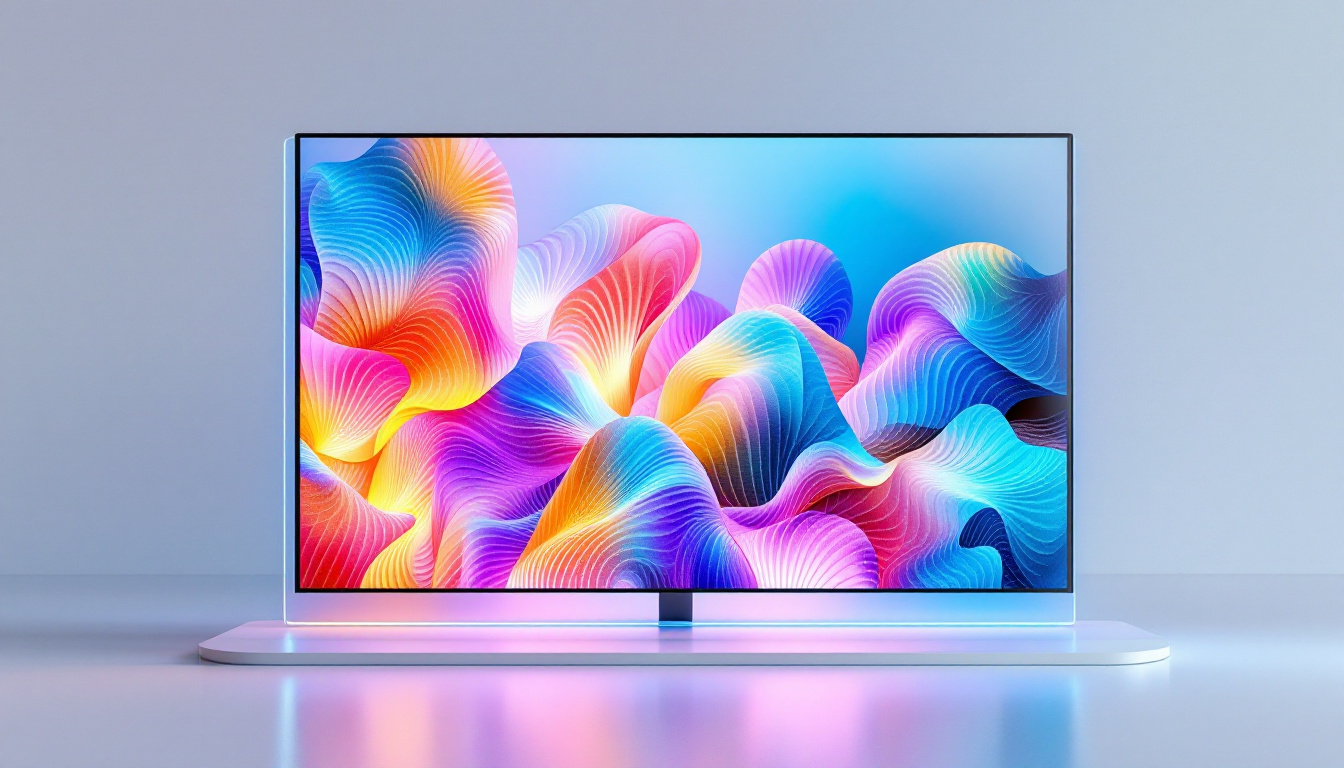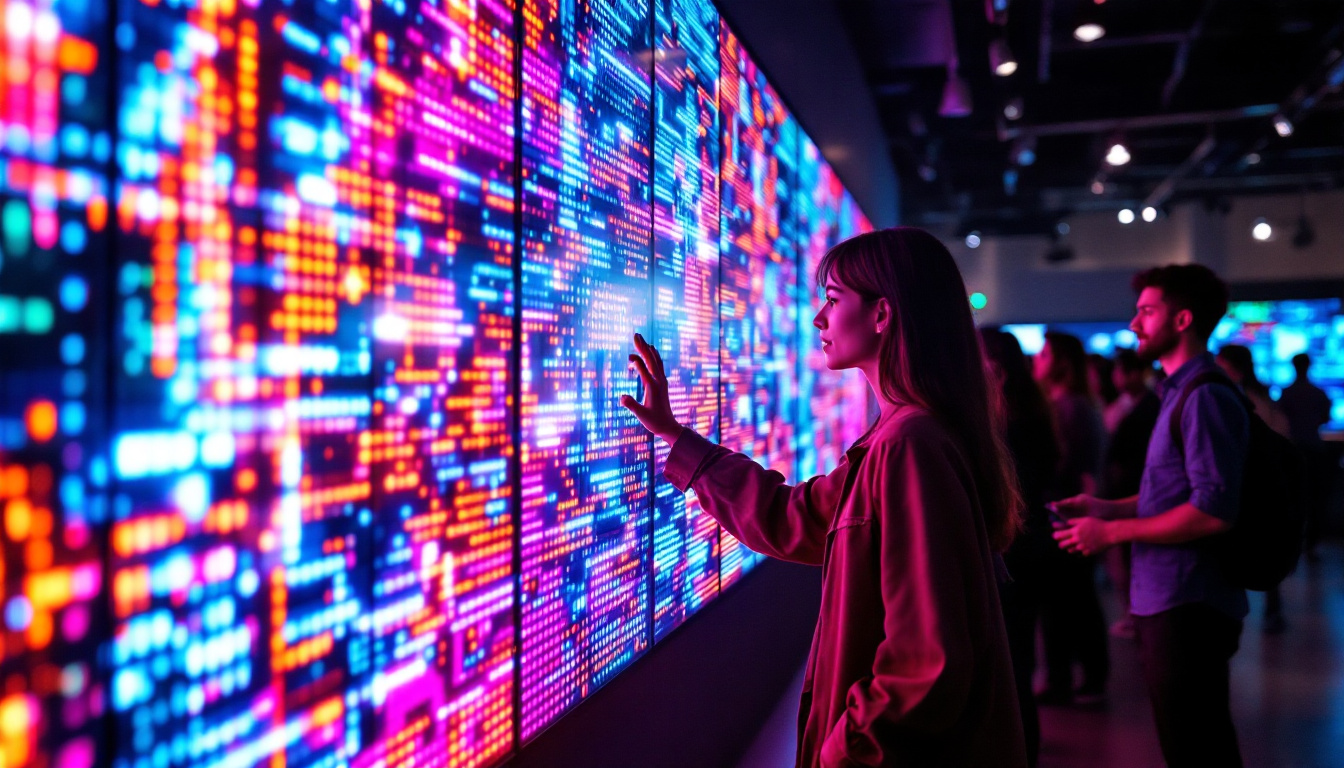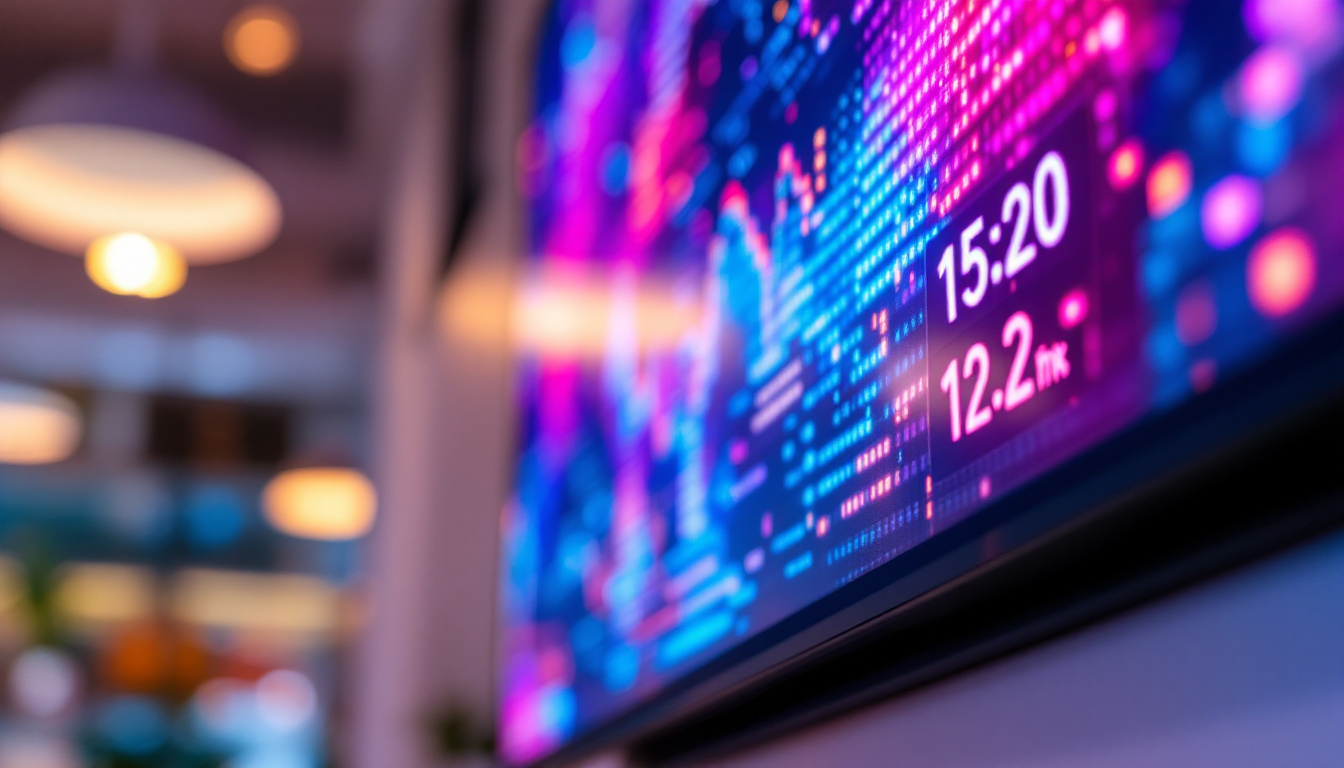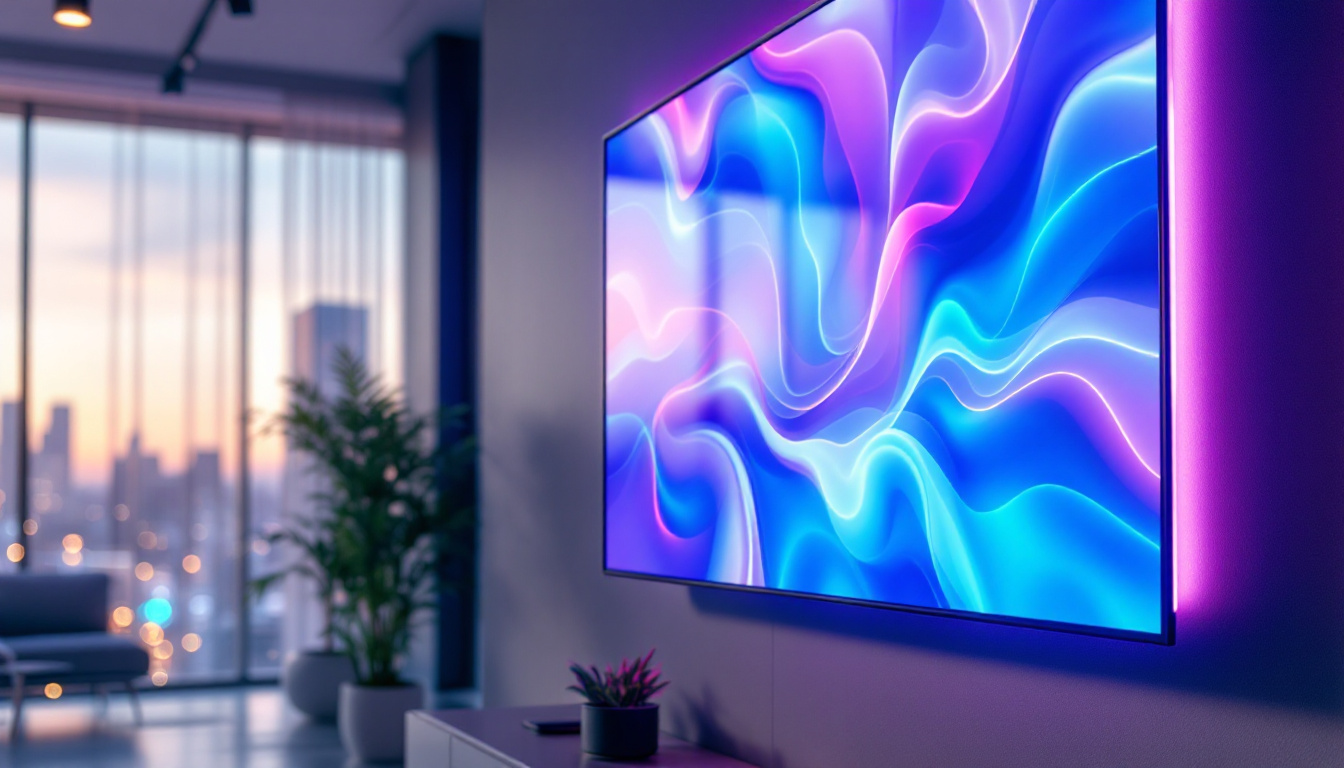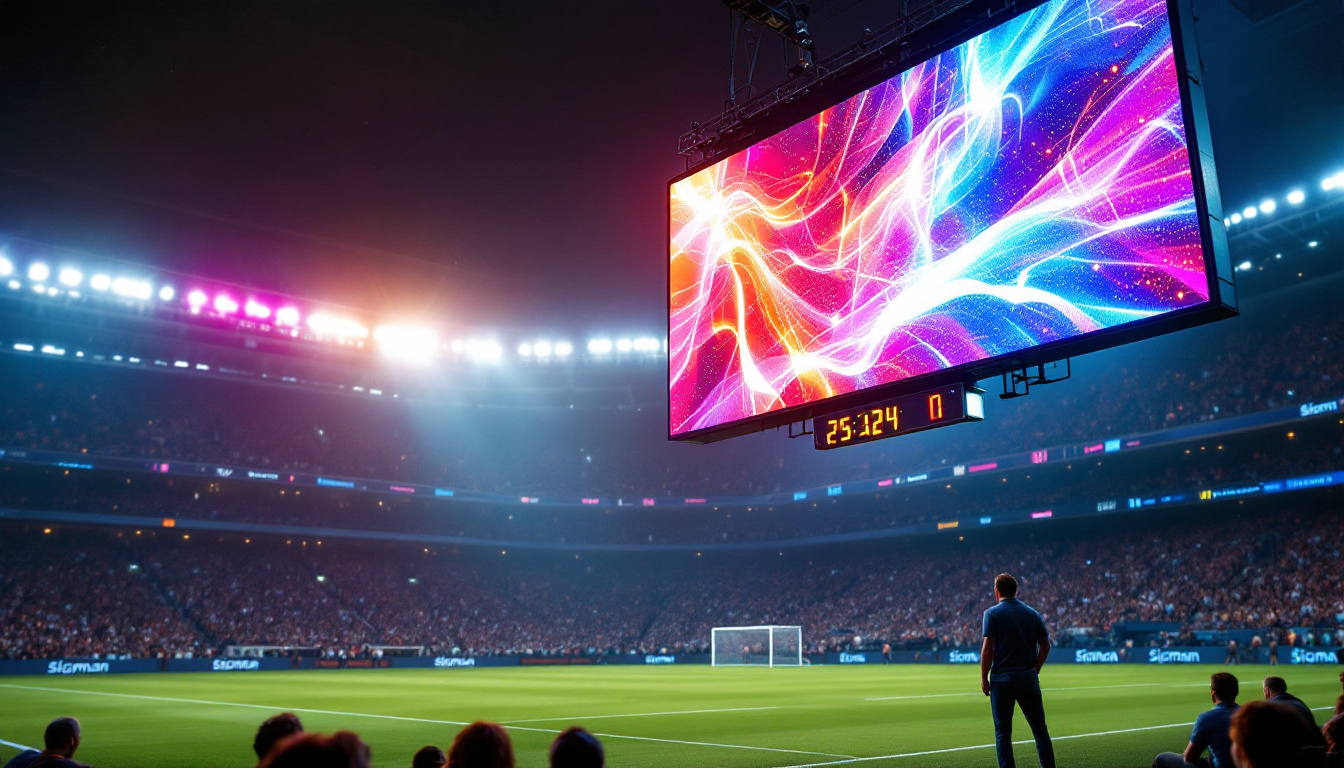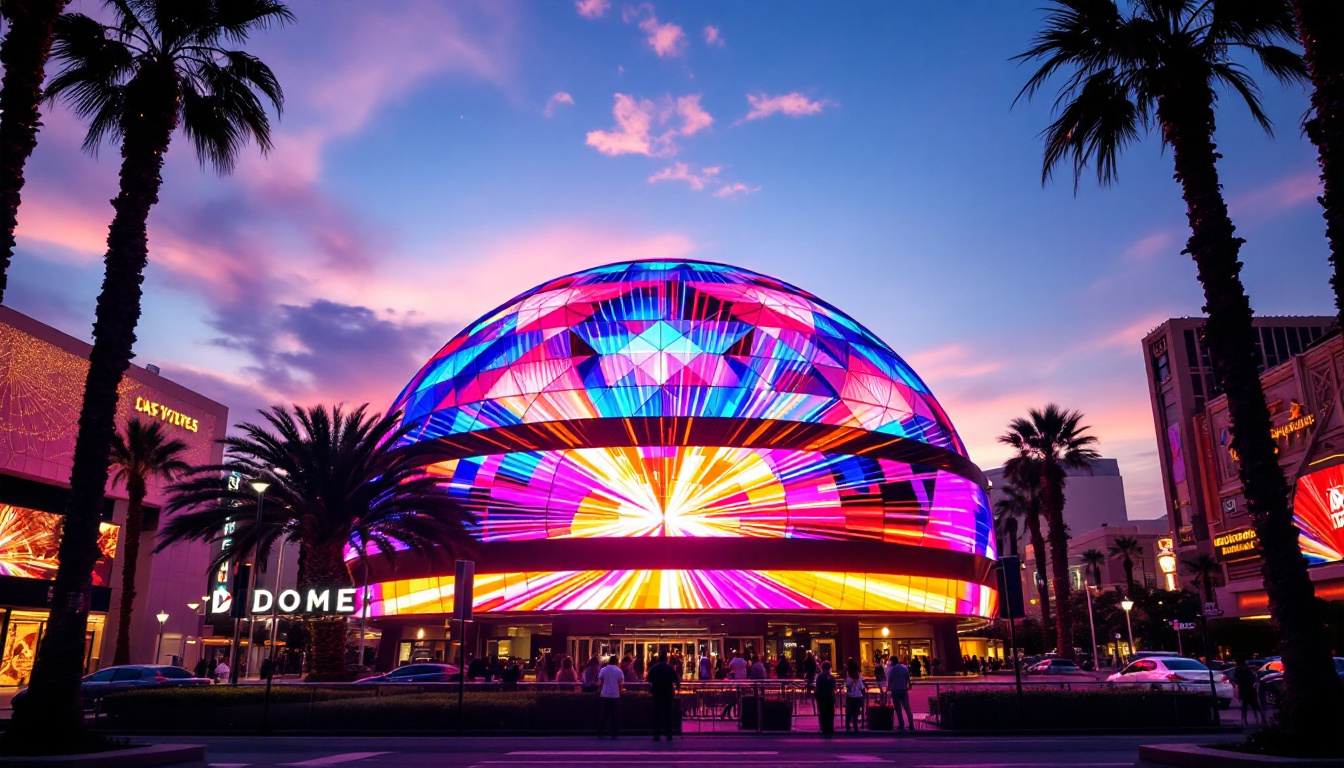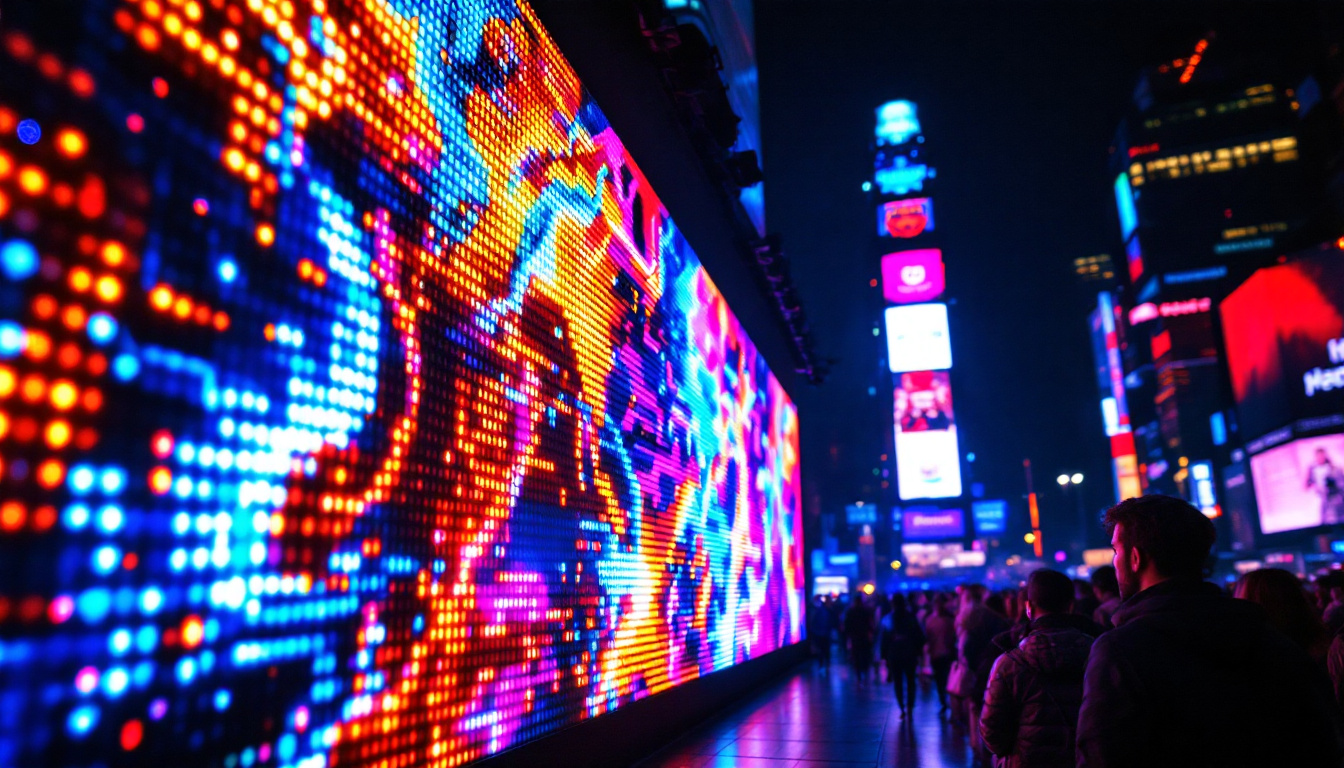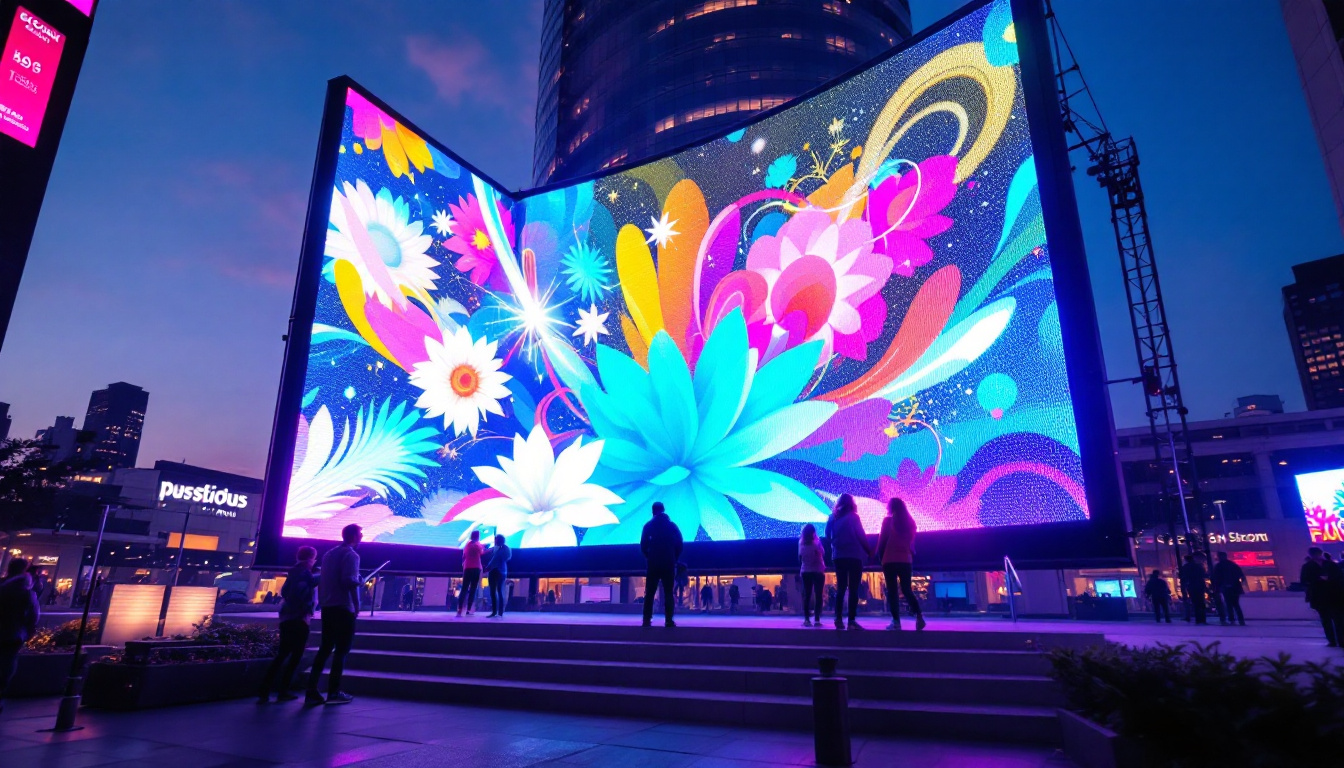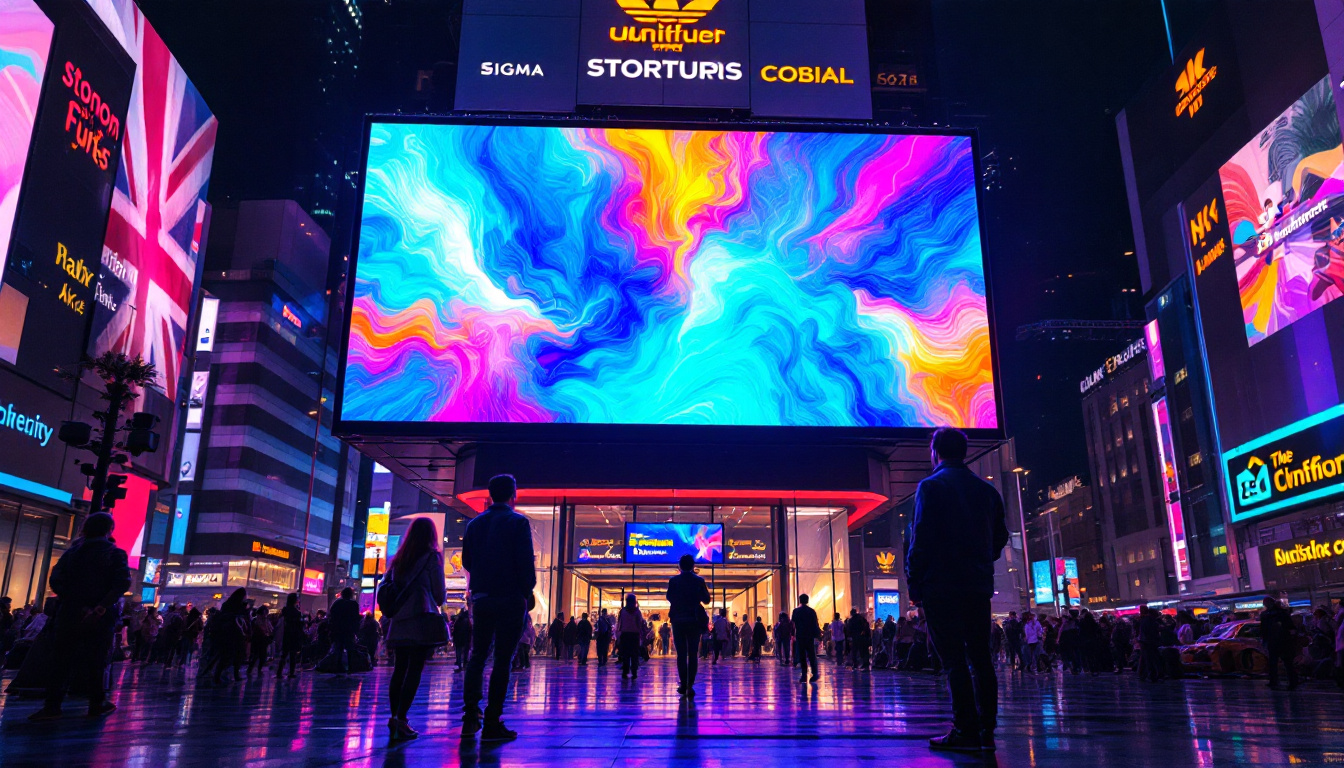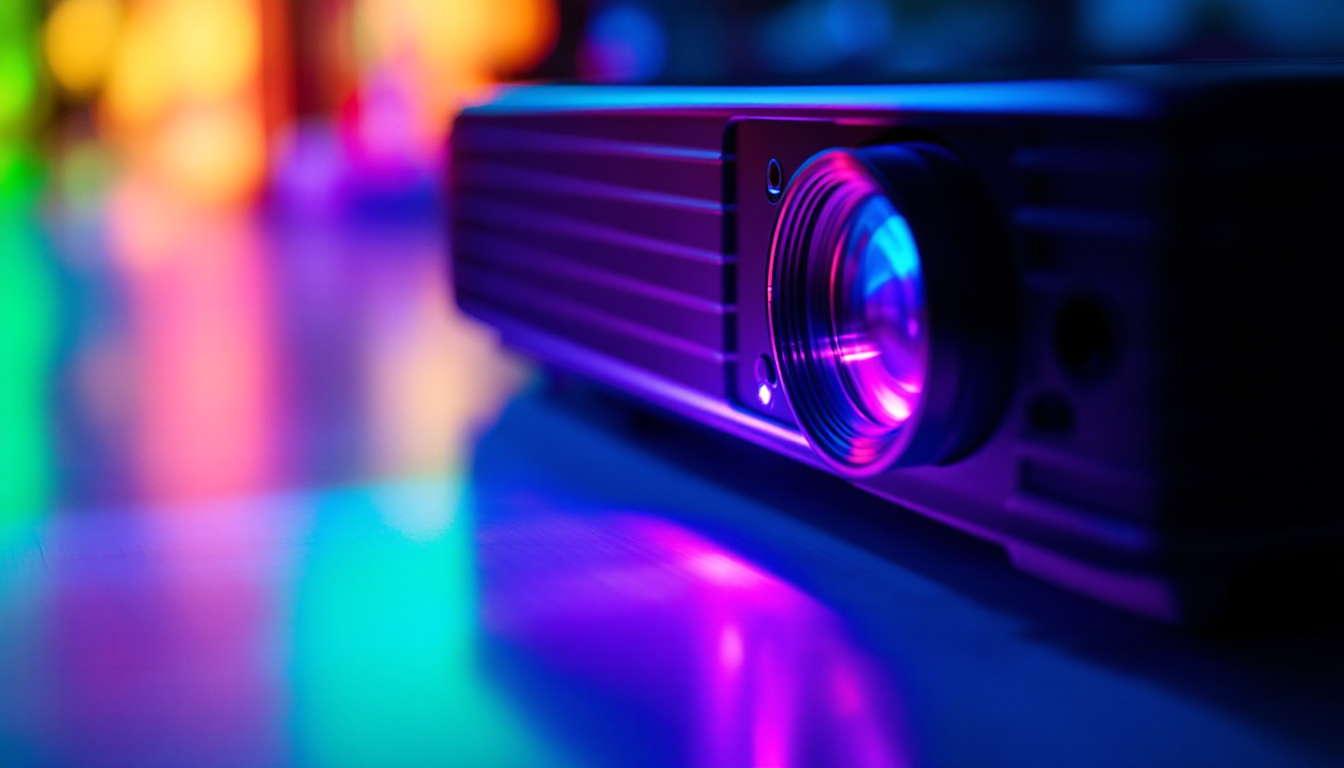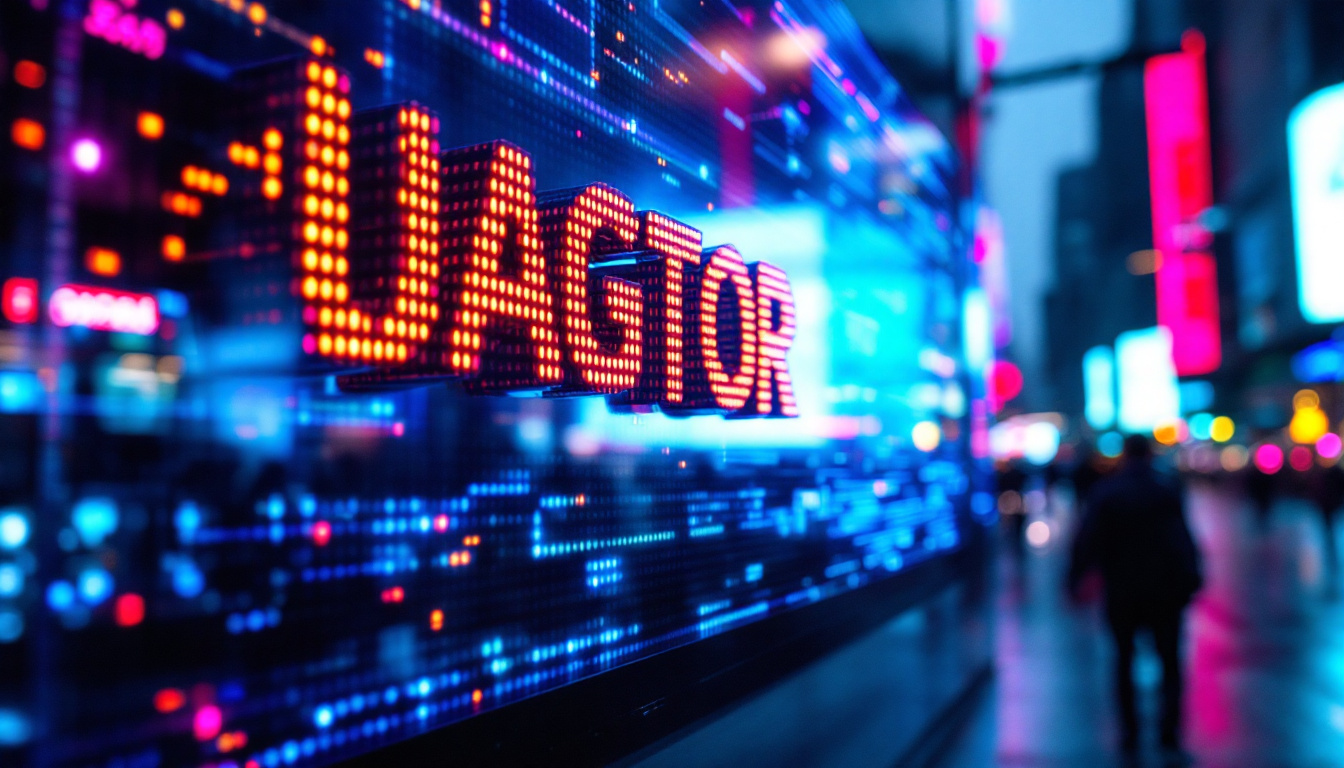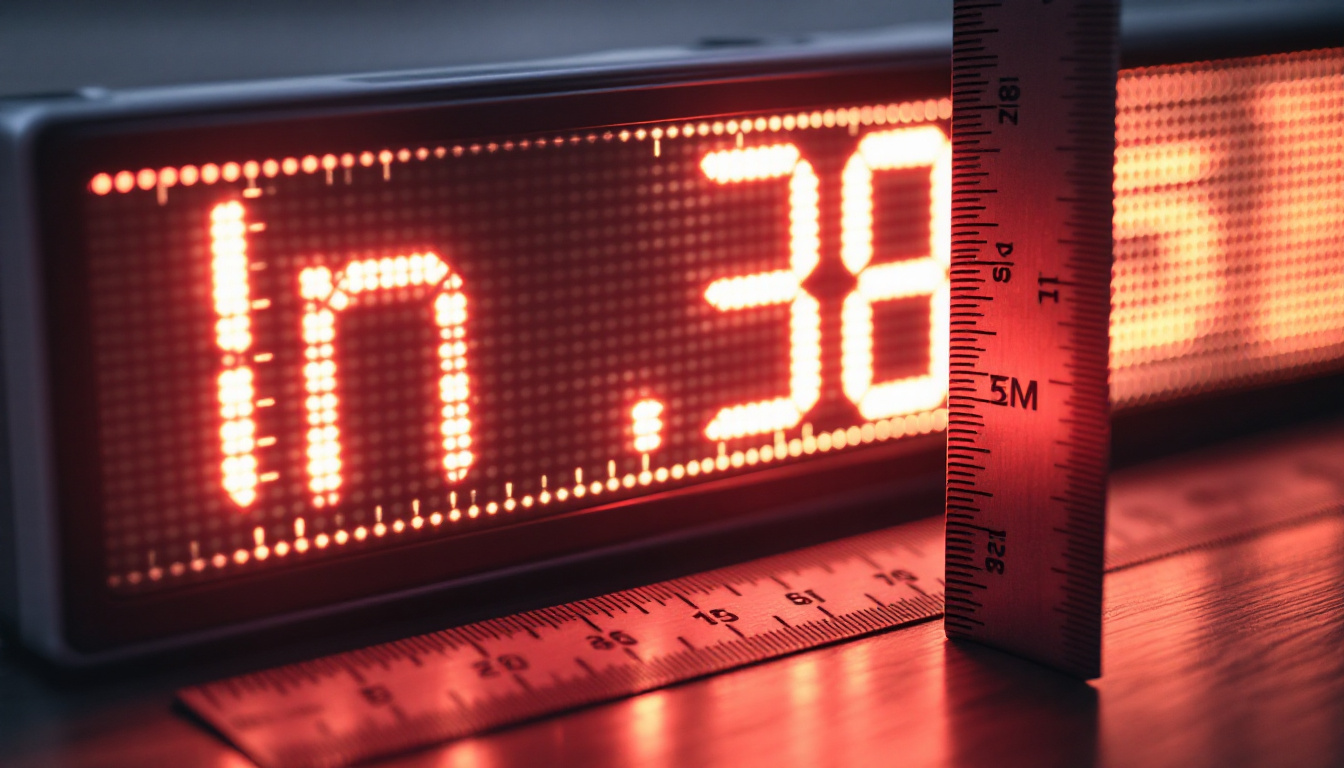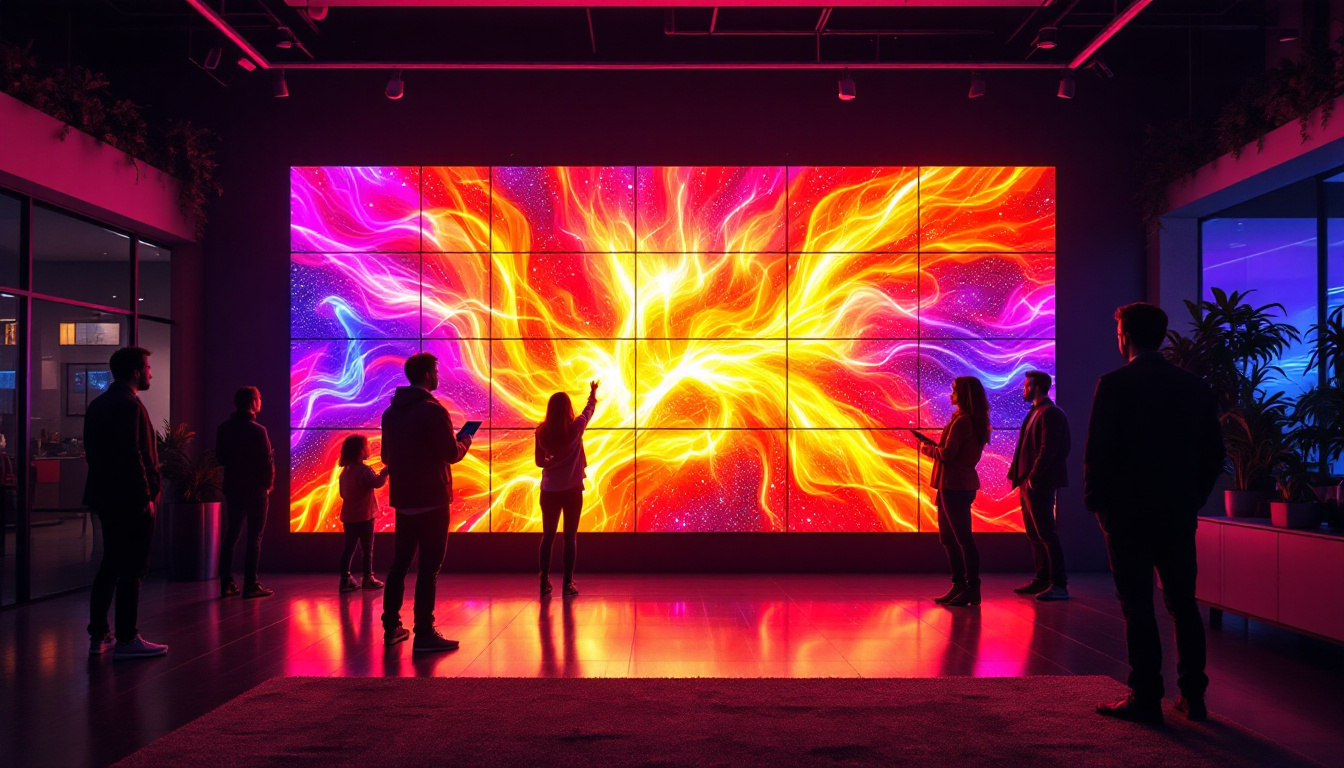Billboards In NYC: LED Display Explained
New York City, often referred to as the “City That Never Sleeps,” is renowned for its vibrant culture, iconic landmarks, and bustling streets. Among the myriad of attractions, the dazzling LED billboards that adorn Times Square and other key locations stand out as a hallmark of modern advertising. These digital displays have revolutionized the way brands communicate with consumers, offering dynamic content that captures attention in an ever-competitive market.
This article delves into the world of LED billboards in NYC, exploring their technology, impact on advertising, and the unique regulations that govern their use. Understanding these elements provides insight into why these displays are not just advertisements but integral parts of the city’s visual landscape.
The Technology Behind LED Billboards
What is LED Technology?
LED, or Light Emitting Diode, technology has transformed the advertising landscape. Unlike traditional billboards that rely on static images or neon lights, LED displays use thousands of tiny diodes to create vibrant, high-resolution images and videos. This technology allows for a broader spectrum of colors and greater brightness, making the content more eye-catching and engaging.
LED billboards can display a variety of content, from simple text messages to complex animations and videos. This versatility is one of the key reasons why advertisers prefer LED displays over traditional options. The ability to change messages in real-time means that brands can tailor their advertising to specific times of day, events, or even current trends, maximizing their reach and impact.
Advantages of LED Displays
One of the significant advantages of LED billboards is their energy efficiency. Compared to traditional lighting methods, LED technology consumes less power while providing superior brightness. This efficiency not only reduces operational costs for advertisers but also contributes to environmental sustainability, a growing concern in urban areas like New York City.
Moreover, LED displays are known for their durability and longevity. Unlike traditional billboards, which may require frequent maintenance and replacement, LED screens are designed to withstand various weather conditions, ensuring that they remain functional and visually appealing for extended periods. This reliability makes them a cost-effective investment for businesses looking to enhance their visibility.
In addition to their resilience, LED billboards are also highly customizable. Advertisers can choose from a range of sizes and configurations, allowing them to create displays that fit perfectly into their desired location. Whether it’s a massive digital screen in Times Square or a smaller display in a local shopping center, the adaptability of LED technology means that brands can find the right solution for their specific needs. This flexibility extends to the content as well, with the capability to incorporate real-time data feeds, such as weather updates or live social media posts, further enhancing viewer engagement.
Dynamic Content and Interactivity
One of the most exciting features of LED billboards is their ability to display dynamic content. Advertisers can change their messages instantly, allowing for a more responsive marketing strategy. For instance, a restaurant can promote a lunch special during the day and switch to a happy hour advertisement in the evening, all with a few clicks.
Furthermore, many LED displays incorporate interactive elements, such as QR codes or social media integration, inviting passersby to engage with the brand in real-time. This interactivity not only enhances the consumer experience but also fosters a deeper connection between the brand and its audience. By encouraging user participation, brands can gather valuable data on consumer preferences and behaviors, which can be used to refine future marketing strategies. Additionally, some LED billboards even feature gamification elements, where users can participate in contests or challenges, making the advertising experience not just informative, but also entertaining.
The Impact of LED Billboards on Advertising
Changing Consumer Behavior
The rise of LED billboards has significantly influenced consumer behavior. In a city as fast-paced as New York, capturing attention is crucial. Research indicates that dynamic advertisements are more effective at engaging viewers than static ones. The vibrant colors and moving images of LED displays can evoke emotions and create memorable impressions, leading to higher brand recall.
Moreover, the strategic placement of these billboards in high-traffic areas ensures that they reach a diverse audience. Whether it’s tourists visiting Times Square or locals commuting through busy streets, LED billboards have the potential to reach millions of viewers daily, making them a powerful tool for brand visibility.
Case Studies of Successful Campaigns
Numerous brands have successfully harnessed the power of LED billboards in NYC to create memorable advertising campaigns. For instance, a major beverage company launched a campaign featuring a stunning 3D animation that appeared to spill out of the billboard, captivating onlookers and generating significant social media buzz. This innovative approach not only attracted attention but also encouraged viewers to share their experiences online, amplifying the campaign’s reach.
Another notable example is a fashion retailer that utilized LED displays to showcase live runway shows. By streaming their fashion shows directly onto billboards, they created a sense of urgency and excitement, driving foot traffic to their stores. Such campaigns demonstrate the effectiveness of LED technology in creating immersive experiences that resonate with consumers.
Brand Storytelling Through Visuals
LED billboards offer brands a unique opportunity to tell their stories visually. Through the use of high-quality graphics and animations, companies can convey their brand values, mission, and personality in a way that resonates with their target audience. This storytelling aspect is particularly important in a city like New York, where consumers are bombarded with information and advertisements at every turn.
For instance, a local charity organization utilized LED billboards to share powerful stories of individuals they had helped, accompanied by compelling visuals. This approach not only raised awareness about their cause but also encouraged donations and community involvement. By leveraging the visual capabilities of LED technology, brands can create narratives that engage and inspire their audience.
Regulations Governing LED Billboards in NYC
Understanding Local Laws
While LED billboards offer numerous advantages, they are also subject to strict regulations in New York City. The city has implemented various laws to control the placement, size, and brightness of digital displays to maintain the aesthetic integrity of its neighborhoods and reduce light pollution.
For instance, LED billboards in residential areas may face stricter regulations compared to those in commercial zones. Additionally, the brightness of these displays is often regulated to ensure that they do not cause distractions for drivers or disrupt the nighttime environment. Advertisers must navigate these regulations carefully to ensure compliance while still maximizing the effectiveness of their campaigns.
Permits and Approvals
Obtaining the necessary permits for LED billboards can be a complex process. Advertisers must submit detailed plans outlining the proposed location, size, and content of the display. The approval process often involves multiple city agencies, including the Department of Transportation and the Department of Buildings, which review applications to ensure they meet safety and aesthetic standards.
In recent years, there has been a push for more streamlined processes to encourage innovative advertising while still adhering to regulations. However, navigating the bureaucracy can be challenging, and advertisers must be prepared for potential delays in launching their campaigns.
Future Trends in LED Advertising
The future of LED billboards in NYC is poised for exciting developments. As technology continues to evolve, the capabilities of these displays are expected to expand. Innovations such as augmented reality (AR) integration and advanced data analytics will likely play a significant role in shaping the next generation of advertising.
For example, AR technology could allow consumers to interact with billboards in real-time, creating immersive experiences that blend the physical and digital worlds. Additionally, data analytics can enable advertisers to tailor their content based on audience demographics, weather conditions, and even real-time events, ensuring that their messages are relevant and timely.
The Role of LED Billboards in Urban Culture
Iconic Landmarks and Cultural Significance
LED billboards have become iconic symbols of New York City, contributing to its unique urban culture. Locations like Times Square are synonymous with bright lights and dynamic displays, attracting millions of visitors each year. These billboards not only serve as advertising platforms but also as cultural landmarks that reflect the city’s energy and creativity.
Moreover, the presence of LED displays has influenced the artistic landscape of the city. Many artists and designers have embraced the medium, using LED technology to create public art installations that challenge traditional notions of advertising and aesthetics. This fusion of art and commerce has sparked conversations about the role of advertising in public spaces and its impact on urban identity.
Community Engagement and Activism
LED billboards also provide a platform for community engagement and activism. Local organizations and movements have utilized these displays to raise awareness about social issues, promote events, and advocate for change. By leveraging the visibility of LED technology, these groups can reach a broader audience and foster dialogue around important topics.
For instance, during significant social movements, LED billboards have been used to display messages of solidarity and support. This ability to amplify voices and messages contributes to the evolving narrative of urban culture, making LED displays not just tools for advertising but also instruments for social change.
Conclusion
LED billboards in New York City represent a fascinating intersection of technology, advertising, and urban culture. Their dynamic nature and ability to engage audiences have transformed the advertising landscape, offering brands innovative ways to connect with consumers. However, the regulatory environment surrounding these displays highlights the need for balance between commercial interests and community standards.
As technology continues to advance, the future of LED billboards promises even more exciting possibilities. From interactive experiences to enhanced storytelling, these displays will likely play an increasingly vital role in shaping the visual identity of New York City. Ultimately, LED billboards are not just advertisements; they are a reflection of the city’s vibrant spirit and an integral part of its cultural fabric.
Illuminate Your Brand with LumenMatrix
As you’ve seen, LED billboards are more than just advertising; they’re a canvas for innovation and creativity in the heart of New York City. If you’re ready to elevate your brand’s presence and captivate your audience with stunning visuals, look no further than LumenMatrix. Our comprehensive range of LED display solutions, from the vibrant Indoor LED Wall Display to the dynamic Outdoor LED Wall Display and beyond, are designed to meet your unique needs and exceed expectations. Embrace the power of visual storytelling and check out LumenMatrix LED Display Solutions today to start your journey towards unparalleled brand visibility.

